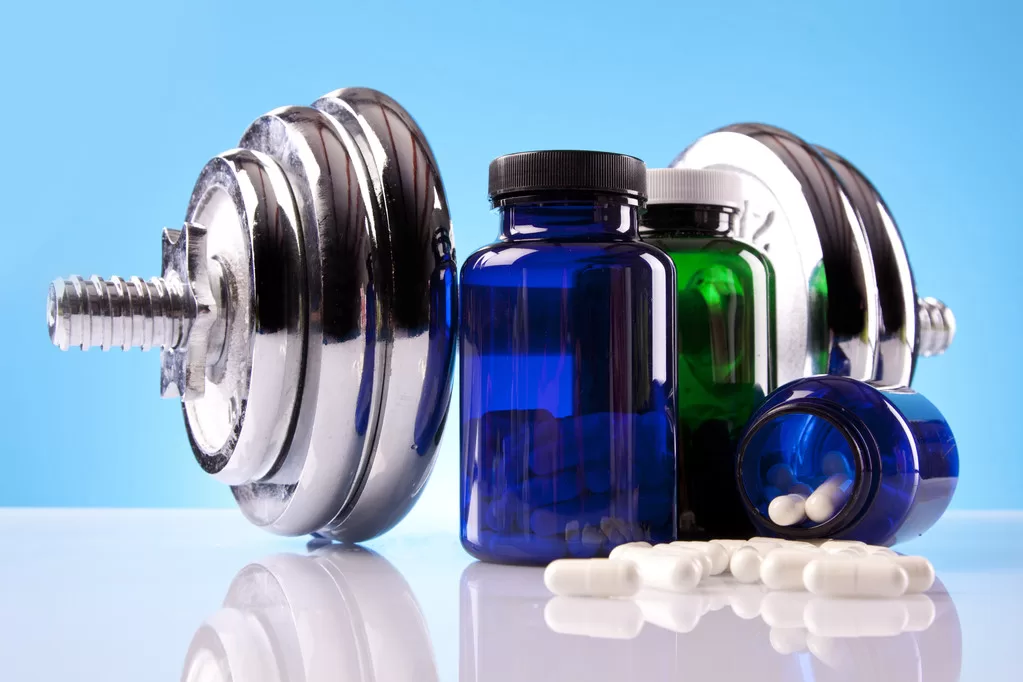Comparing NMN and NR (Nicotinamide Riboside): What’s the Difference?
08/21/2023

If you're into the world of anti-aging and longevity, you've probably come across terms like NMN and NR. But what exactly are these mysterious acronyms, and more importantly, what sets them apart? In this article, we'll take a deep dive into the world of NMN and NR to uncover their unique qualities and benefits. Buckle up, because we're about to embark on a fascinating journey through the realm of youth!

Understanding NMN and NR
Before we delve into their differences, let's get to know NMN and NR individually. First up, we have NMN, which stands for Nicotinamide Mononucleotide. This mouthful of a compound plays a crucial role in our bodies by being a precursor to NAD+, a coenzyme essential for countless biological processes.
On the other hand, NR, or Nicotinamide Riboside, isn't one to be overshadowed. Like NMN, NR is another precursor of NAD+. In simple terms, both NMN and NR act as building blocks that ultimately contribute to the formation of NAD+, which we can think of as an all-star quarterback in the game of cellular energy production.
Defining NMN: Its Role and Benefits
Picture this: NMN is like the conductor of an orchestra, orchestrating the symphony of cellular activity in our bodies. By increasing NAD+ levels, NMN promotes various processes such as DNA repair, gene expression, and energy production. Additionally, NMN has been linked to improved mitochondrial function, which is the powerhouse of our cells. Mamma mia, sounds pretty incredible, right?
Let's dive deeper into the role of NMN. When NMN is present in our bodies, it acts as a catalyst for the production of NAD+. This coenzyme is involved in numerous essential cellular processes, including the repair of damaged DNA. By repairing DNA, NMN helps to maintain the integrity of our genetic material, preventing mutations and potential health issues.
But that's not all! NMN also plays a vital role in gene expression. It helps to activate certain genes that are responsible for regulating various biological functions. This activation leads to improved cellular function and overall well-being.
Furthermore, NMN is a key player in energy production. It fuels the mitochondria, the energy powerhouses of our cells, by providing the necessary components for ATP synthesis. With increased NMN levels, our cells have a greater capacity to generate energy, resulting in improved vitality and performance.
Defining NR: Its Role and Benefits
Now let's switch gears and focus on NR. Just like NMN, NR has its own impressive repertoire of benefits. By ramping up NAD+ levels, NR also contributes to efficient cellular functioning. But here's where NR struts its stuff - it has been shown to activate certain proteins called sirtuins, which play a pivotal role in regulating cellular health and promoting longevity.
This superhero-like ability of NR to activate sirtuins has sparked interest in the scientific community, making it a hot topic of research in the realm of anti-aging. Researchers are exploring the potential of NR in extending lifespan and improving overall health. By activating sirtuins, NR helps to enhance cellular repair mechanisms, reduce inflammation, and increase cellular resilience.
Moreover, NR has been found to have a positive impact on metabolic health. It has been shown to improve insulin sensitivity, regulate blood sugar levels, and promote healthy weight management. These metabolic benefits make NR a promising candidate for addressing conditions such as obesity and type 2 diabetes.
Additionally, NR has shown potential in protecting against neurodegenerative diseases. Studies have suggested that NR may help to preserve cognitive function and prevent age-related cognitive decline. By supporting brain health, NR offers a ray of hope in the battle against conditions like Alzheimer's and Parkinson's disease.
All in all, NR is a multitasking marvel that not only boosts NAD+ levels but also activates sirtuins, improves metabolic health, and potentially safeguards our brain function as we age.
The Biochemical Differences Between NMN and NR
Now that we've acquainted ourselves with the starring roles of NMN and NR, let's explore the biochemical disparities that make them unique.
But first, let's take a step back and understand the importance of NAD+ in our bodies. NAD+, or nicotinamide adenine dinucleotide, is a coenzyme that plays a crucial role in various cellular processes, including energy production, DNA repair, and gene expression. It is involved in over 400 enzymatic reactions in our bodies, making it an essential molecule for overall health and well-being.
Now, let's dive into the metabolic pathways of NMN and NR.
The Metabolic Pathways of NMN and NR
While NMN and NR both lead to the formation of NAD+, they follow slightly different metabolic paths. NMN is transformed into NAD+ directly through a series of efficient steps, making it a quick and efficient route to elevated NAD+ levels.
On the other hand, NR requires an additional enzyme called NRK to convert it into NMN before it can be further transformed into NAD+. Think of it as a scenic route that takes a little longer but still gets you to the same destination!
Interestingly, recent studies have shown that the metabolic conversion of NR to NMN is more prevalent in certain tissues, such as the liver, while NMN synthesis directly from nicotinamide is more common in other tissues. This tissue-specific variation adds another layer of complexity to the metabolic pathways of NMN and NR.
The Cellular Uptake of NMN and NR
Once NMN and NR make their way into our bodies, they face another obstacle - cellular uptake. How these molecules enter our cells can influence their effectiveness and availability for NAD+ production.
NMN has been found to be more readily absorbed by cells compared to NR. It waltzes right through the cell membrane and gets to work on the NAD+ production line, like a master infiltrator. This efficient cellular uptake of NMN ensures a rapid increase in NAD+ levels, which can have immediate benefits for cellular function and overall health.
Meanwhile, NR takes a slightly different approach, relying on transporters called Slc12a8 to enter the cells. These transporters act as gatekeepers, allowing NR to enter the cell and participate in the NAD+ synthesis process. It's like NR politely knocking on the cell's door and waiting for an invitation inside.
Interestingly, the expression of Slc12a8 transporters can vary among different tissues and cell types, which may contribute to the differential uptake and utilization of NR in our bodies. This variability adds another layer of complexity to the cellular uptake mechanisms of NR.
In conclusion, while both NMN and NR ultimately lead to the production of NAD+, they differ in their metabolic pathways and cellular uptake mechanisms. Understanding these biochemical differences can help us appreciate the unique characteristics of NMN and NR and their potential implications for human health.
The Impact of NMN and NR on Aging
Now that we've explored the biochemical nuances, let's turn our attention to the effects of NMN and NR on the aging process. Brace yourself for a mind-blowing journey through the fountains of youth!
How NMN Influences Aging
With its role in promoting NAD+ production, NMN has been applauded for its potential impact on slowing down aging. By enhancing mitochondrial function, NMN helps to replenish energy levels and combat the age-related decline that often leaves us feeling weary. It's like pressing the rewind button on the clock of life - no more feeling like a wilted flower!
Furthermore, NMN's ability to support DNA repair mechanisms can help maintain the integrity of our genetic material, reducing the risk of age-related diseases. It's like giving our DNA a makeover with a fresh coat of resilience!
How NR Influences Aging
Now, let's shine the spotlight on NR and its role in the eternal quest for youthfulness. Remember the superhero-like ability we mentioned earlier? By activating sirtuins, NR sets in motion a cascade of events that promote cellular health and longevity. It's like having a squad of superheroes working tirelessly within our cells, fighting off the villains of aging.
But that's not all - NR has also been associated with improved metabolic function, aiding in the regulation of glucose levels and body weight. It's like having a personal trainer that keeps our metabolism in top-notch shape!
Side Effects and Safety of NMN and NR
Now, we can't talk about these fantastic compounds without addressing the elephant in the room - side effects and safety precautions. Let's take a closer look!
Potential Side Effects of NMN
Fret not, fellow adventurers, for NMN has shown to be well-tolerated in studies. However, as with anything that boasts such marvelous benefits, there are a few potential side effects to be aware of. These can include mild gastrointestinal discomfort or flushing. But fear not - these effects are often temporary and subside as your body gets accustomed to the magic of NMN. Consider it a small price to pay for the potential fountain of youth!
Potential Side Effects of NR
Similarly, NR has exhibited a favorable safety profile. Just like its counterpart, NR may occasionally cause gastrointestinal disturbances or mild flushing. However, these effects are generally fleeting and diminish over time. It's like a minor inconvenience that fades away, leaving us with the promise of vitality and longevity.
The Efficacy of NMN and NR Supplements
Now that we've covered the differences, benefits, and safety aspects, you're probably itching to know how effective NMN and NR supplements really are. Let's do a little detective work!

Evaluating the Effectiveness of NMN Supplements
Research on NMN supplements has shown promising results. Studies indicate that NMN supplementation can indeed increase NAD+ levels, which in turn may support various aspects of health and aging. However, it's important to note that more research is needed to fully comprehend the long-term effects and optimal dosage. For now, consider NMN as an exciting potential ally in your quest for everlasting youth!
Evaluating the Effectiveness of NR Supplements
As for NR supplements, the realm of research has also revealed encouraging findings. Studies suggest that NR supplementation may elevate NAD+ levels, activate sirtuins, and potentially confer benefits on aging-related issues. Yet, as with NMN, the optimal dosage and long-term effects require further exploration. But fear not, intrepid explorer, for NR may hold the key to unlocking the secrets of eternal vitality!
Conclusion
So, there you have it - the captivating tale of NMN and NR. Both compounds, though distinct in their mechanisms, offer a promising glimpse into the realm of anti-aging and longevity. Whether you choose the swift and efficient path of NMN or the superhero-like activation of sirtuins through NR, these compounds hold the potential to support a healthier and more vibrant future.
As with any exciting scientific frontier, it's crucial to stay tuned for future advancements, as research continues to unveil the mysteries of NMN and NR. In the quest for eternal youth, we must remain open to exploration, embracing the ever-evolving landscape of anti-aging discoveries. So, my fellow seekers of longevity, strap on your curiosity and embark on this captivating journey towards a brighter, more youthful tomorrow!

 Back to Blog
Back to Blog